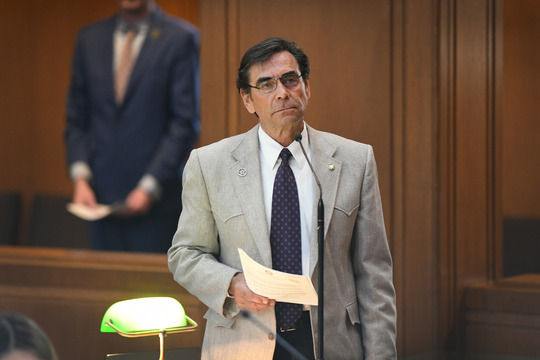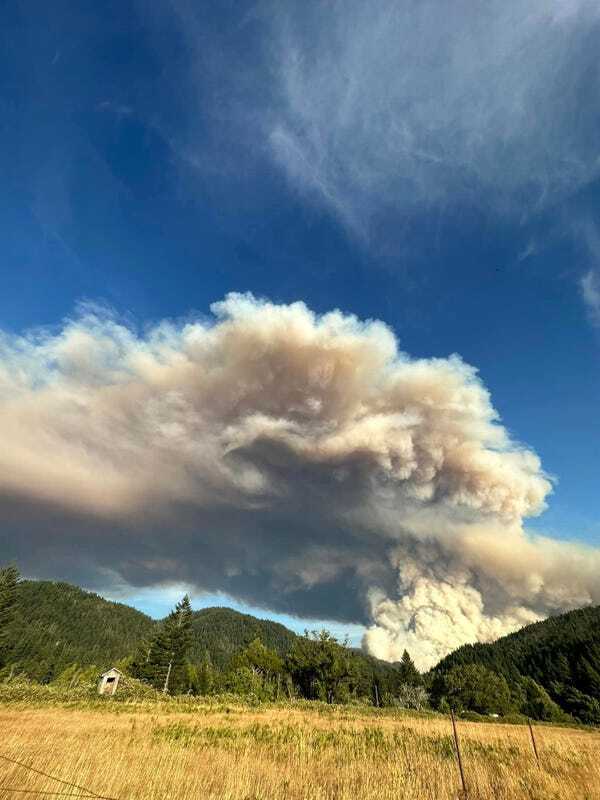
 Photo courtesy: Jennifer Northup / Lucas Lodge, The Statesman Journal
Fire crews get OK to use heavy equipment in Kalmiopsis Wilderness to fight Flat Fire
Original article: The Statesman Journal by Zach Urness
The U.S. Forest Service granted permission Sunday for fire crews to use heavy equipment in the Kalmiopsis Wilderness to fight the 20,000-acre Flat Fire.
Any motorized equipment normally is banned in federal wilderness areas and even fighting fires on landscapes protected by the 1964 Wilderness Act has been a source of debate. Trail crews are barred from even using chainsaws to clear brush and logs from hiking paths.
But as the Flat Fire grew rapidly in an area notorious for breeding fires that turn into megafires, local politicians, including Rep. Court Boice, R-District 1, which covers Curry, Douglas and Coos counties, advocated for opening roads into the wilderness areas to fight the fire.
“Declare a wise and legitimate emergency — override congressional laws stopping (equipment) in wilderness areas,” former Curry County Commissioner Boice said in a letter to Oregon Gov. Tina Kotek and Oregon's Congressional delegation. “This misguided approach is brutally dangerous to our communities.”
In a news release labeled “carefully considered decision,” the Forest Service said it approved using heavy equipment on an old mining road for a dozer line that starts at Game Lake and heads east, traversing the Kalmiopsis Wilderness at its northern boundary. It noted that it used the road previously while fighting the 2018 Klondike Fire.
The Forest Service said in the release that the road has minimal to moderate serpentine scrub and rocky soils and there “will be less impacts by utilizing an existing roadbed versus creating a new disturbance.”
“By taking this action, we have an opportunity to check this fire on the south side,” said acting Region 6 forest supervisor Jake Winn said.
Andy Stahl, executive director of Forest Service Employees for Environmental Ethics said the Wilderness Act allows using mechanized equipment for fire suppression.
“That being said, for decades after the act’s passage it was uncommon for the Forest Service to use this authority. Instead, they took a light-on-the-land approach, called ‘minimum impact suppression technology’ for wilderness fire suppression,” Stahl said. “Although the Forest Service doesn’t report/summarize its use of bulldozers in wilderness, my impression is that their use is growing. Whether they make any difference is worth a hard look.”
The Forest Service said the approach “reduces risk and exposure to firefighters because the only alternative to utilizing dozer line is to construct handline, which requires considerably more people for a greater amount of time,” the agency said.
In addition, constructing dozer line allows for teams to remove firefighters more rapidly in the event of an emergency.
“It can make the difference between life and death in such a challenging environment,” Winn said.
Consequences of not utilizing a dozer in the wilderness, the Forest Service said, was “minimal viable options to stop the fire on the south-southwest flank, creating potential for a longer and larger duration fire and associated increased costs,” the news release said.
In addition, it could “increase the probability of the fire coming into alignment with east winds as the season progresses and potentially putting the communities of Brookings, Hunter Creek, Pistol Creek and Carpenterville at risk.”
In 2017, a small fire named the Chetco Bar Fire burning in the Kalmiopsis, exploded and nearly burned the town of Brookings when the area’s notorious “Chetco winds” caused the blaze to spread rapidly.
“We should never forget, the Chetco Bar Fire … traveled 18 miles in less than 40 hours,” Boice said. Failure to take action on the Flat Fire could lead to a similar situation, he said.
“The risk of loss of property and life is immense. We could lose towns or worse,” Boice wrote.
However, the aftermath of fire crews digging lines in the wilderness is that it can impact future trails and recreation, said Gabe Howe, executive director of the Siskiyou Mountain Club, which maintains trails in the Kalmiopsis.
"Unfortunately, we regularly approach a fireline a year or two after it was 'rehabbed' and are underwhelmed by the workmanship," Howe said. "The rehab work is critical to restoring drainage and maintaining wilderness character. Often performed by contractors with no agency inspection, the lines are often left more-or-less as is.
"I can only hope that the advisers do everything they can to repair this fireline as best they can."
Zach Urness has been an outdoors reporter in Oregon for 15 years and is host of the Explore Oregon Podcast. To support his work, subscribe to the Statesman Journal. Urness is the author of “Best Hikes with Kids: Oregon” and “Hiking Southern Oregon.” He can be reached at zurness@StatesmanJournal.com or (503) 399-6801. Find him on Twitter at @ZachsORoutdoors.
Capitol Phone: 503-986-1401
Capitol Address: 900 Court St. NE, H-382, Salem, Oregon 97301
Email: Rep.CourtBoice@oregonlegislature.gov
Website: https://www.oregonlegislature.gov/boice
|